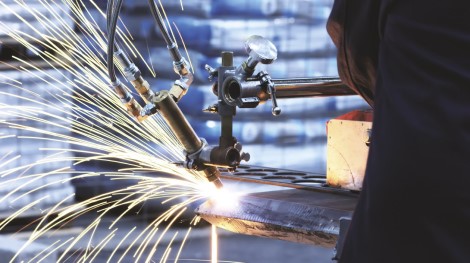Applications of laser in different industries and their working
Lasers are used for a wide range of applications which includes laser material processing in drilling, cutting, cladding, welding, hardening, marking, micromachining, lithography, soldering (brazing), surface modification, engraving, pulse laser deposition, etc.

In many cases, relatively high optical intensities are applied over a small space, leading to rapid heating, possibly evaporation, and plasma production. Some important factors are the high spatial coherence of laser light which helps in the strong focusing, and often also the potential for generating intense pulses.
In comparison to the mechanical approaches, laser processing methods have many advantages. They allow for the manufacture of very fine structures with high quality, avoiding mechanical stress such as that caused by mechanical drills and blades. A laser beam that has a very high beam quality is used to drill deep holes, e.g. for injection nozzles. We can also achieve a high processing speed, e.g. in the fabrication of filter sieves. In addition, the limitation which remains in the mechanical tool for a lifetime gets removed.
The requirements of beam quality and optical power except the wavelength depend upon the applications and the involved material. For example, very low power levels are required to do the laser marking on the plastics, on the other hand, welding, drilling, or cutting on metals requires much more of ten multiple kilowatts. Soldering applications may require high power, but only a moderate beam quality, whereas particularly remote welding (i.e., welding with sufficient distance between the laser head and the welded parts) depends on high beam quality. The optical window glass are coated which increases the efficiency of lens optic and optical laser optics.
Laser-aided manufacturing also helps in order to produce the essentially same parts with higher quality and/or lower cost. In addition, it becomes quite possible to realize entirely new part designs or the use of new materials. For example, lighter materials such as aluminium for the production of automobile parts, which require experimentally more laser joining operations. Weight reduction is possible not only by the user of lighter materials but also by example. By producing them with shorter flanges due to higher precision than traditional production methods.
Lasers are also used for the purpose of alignment. Alignment lases simply through a Gaussian laser beam, which eventually forms a circular spot on a workpiece, a line, a cross, or some other pattern.